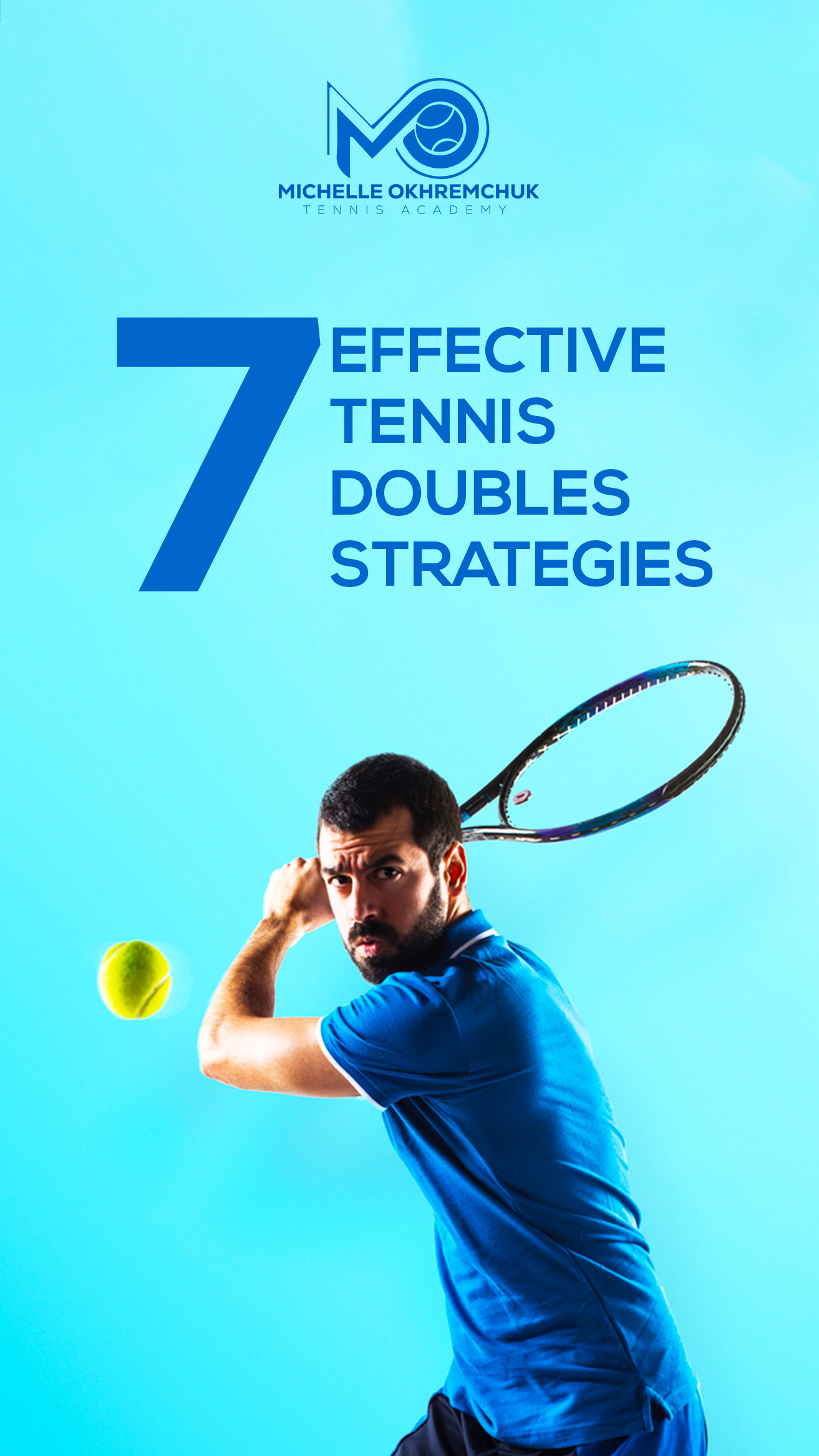Contrary to the simplicity of singles play, tennis doubles introduces a layer of complexity where teamwork is paramount.
Crafting a winning tennis doubles strategy is the key to success on the doubles court.
What is Tennis Doubles?
Tennis doubles, often seen as more intricate than singles, features four players, with two players on each side forming a team. Another distinguishing feature is the court size, which expands to 36 feet wide and 78 feet long, in contrast to the 27-foot width of a singles court. As the court dimensions increase, so does the challenges of the game.
For aspiring players, starting with doubles is often a fundamental step to build teamwork and coordination.
Now, let’s delve into various tennis doubles strategies you need to master.
Over the Net
One common strategy by professional doubles tennis players is taking control of the net. You’ve likely witnessed points where both players conclude the rally just a few feet from the net.
Consistently seizing the net in a doubles match puts immense pressure on your opponents. It forces them onto their heels, attempting challenging, low-percentage shots.
Volleys near the net tend to be more manageable, leading to more won points. You gain superior angles at the net along with the ability to execute powerful smashes.
If maintaining a constant net position for both players isn’t possible, at least ensure that one of you is often near the net. If one player remains at the baseline, they can execute lob shots and transition to the net.
A word of caution: When at the net, be prepared for lobs from your opponents. Stay alert!
Move Side to Side at the Net
A dynamic strategy in doubles involves lateral movement at the net, particularly when your opponent is about to hit a groundstroke. This maneuver places pressure on your opponents, forcing them to alter their shot direction or attempt more challenging shots.
Tennis players are discouraged from hitting towards the net player in doubles, so they will likely struggle to adjust their shots, leading to unforced errors and frustration.
Hit the Ball to the Net Player’s Feet
Targeting the opponent’s feet with your shots is an effective tactic, as it’s considerably tougher to execute a successful volley when the ball is low, near the ankles or feet. Aiming for the feet places your opponents at a disadvantage, often resulting in missed shots or pop-ups since they must lift a challenging volley back over the net.
This scenario presents an ideal opportunity for you or your partner to poach and finish the point.
You can force the ball towards their feet by imparting heavy topspin on your groundstrokes, causing the ball to dip near the opponent’s feet.
Alternatively, a softly hit volley that stays low over the net before dropping at their feet can yield similar results.
Hit Groundstrokes Deep in the Court
When returning serves or executing groundstrokes, strive to send the ball deep into the court, pushing your opponents back. This enables you to advance towards the net for the next shot.
By driving the ball deep, you place your opponents on the defensive, often prompting them to deliver weak responses.
This, in turn, provides you with an opportunity to seize control at the net. A well-aimed forehand towards the deep corner near the doubles alley is an effective tactic.
Attack the Middle of the Court
A valuable strategy in doubles is “down the middle solves the riddle.” Targeting the middle of the court presents several advantages:
- It forces the opposing team to communicate, potentially causing confusion, especially if one player possesses a strong forehand.
- It restricts the angles for their next shot, making it easier for you and your partner to cover the middle and challenge wide passes.
- In doubles, with two players on each side, safe zones for shot placement are limited. Your team should strive to dominate these areas, creating discomfort and mistakes in the opposing team.
Effective communication is crucial in this strategy. Before the point begins, coordinate and allocate responsibilities to avoid confusion and ensure optimal coverage.
Hit to the Weaker Player’s Backhand Volley
Almost every doubles player exhibits a weaker backhand volley compared to their forehand volley. Strategically directing a hard or low shot at the weaker opponent’s backhand volley often results in missed shots or easy subsequent hits.
When both opponents are at the net, this should be the default choice, unless a more evident opportunity arises.
Identify the weaker player on the opposing team, scrutinizing their serve, return, reactions to aggressive shots, and propensity for making mistakes. Once the weak link is identified, direct most of your shots towards them. This disrupts the other player as well and can lead to overall tension and errors in the opposing team.
A word of caution: Focus on executing shots towards the weak player that are feasible rather than forcing your shots. The goal is to remain unpredictable. If the opposing team recognizes your strategy, they may attempt to exploit it.
Lob Them
This strategic approach aims to disrupt the balance within the opposing team, compelling them to alter their positions, playing style, and shot directions. Executed correctly, this strategy forces the opponent’s team into disarray.
Here’s how it works: Lob the ball over the weaker player’s shoulder to the net player’s side of the court. This approach carries two key advantages:
- The net player struggles to respond with a powerful shot if the lob is executed poorly.
- In the case of a well-executed lob, the net player is forced to retreat to handle an overhead shot, while the other player calls them off along the way. This creates confusion within the opposing team.
However, it’s worth noting that executing perfect lobs at a high level can be challenging. Therefore, it’s advisable not to rely excessively on this strategy to maintain unpredictability.
Conclusion
A winning strategy in tennis doubles hinges on effective teamwork and communication. While we’ve discussed sevent specific strategies here, they should not be seen as rigid rules but rather as tools to be mixed and matched based on the situation. Continuous practice and refinement of your chosen strategies are essential for success.
Remember, the key to excellence in doubles lies in identifying what strategy works best for your team and taking it to the next level through practice and adaptation. Share these tennis doubles strategies with your game partner or family, and together, take advantage of this comprehensive guide to elevate your doubles game.


